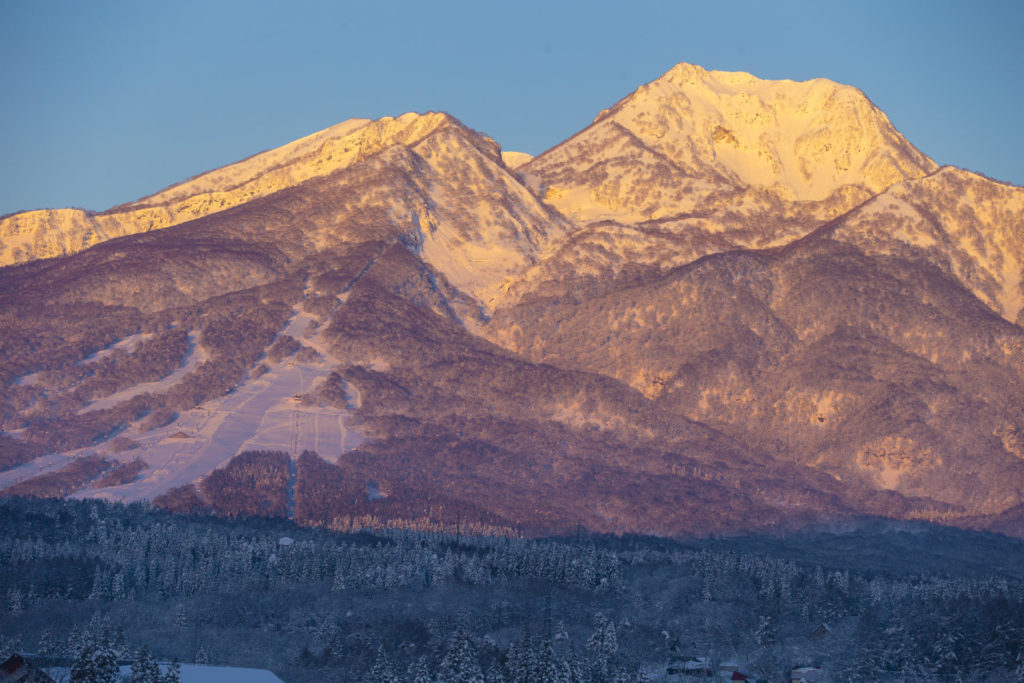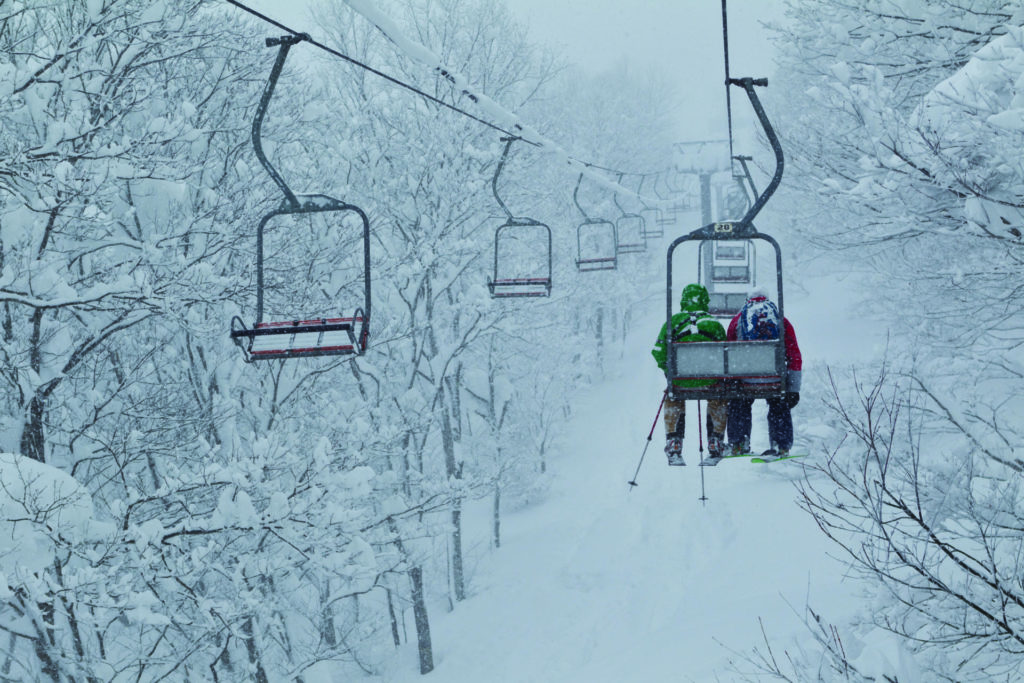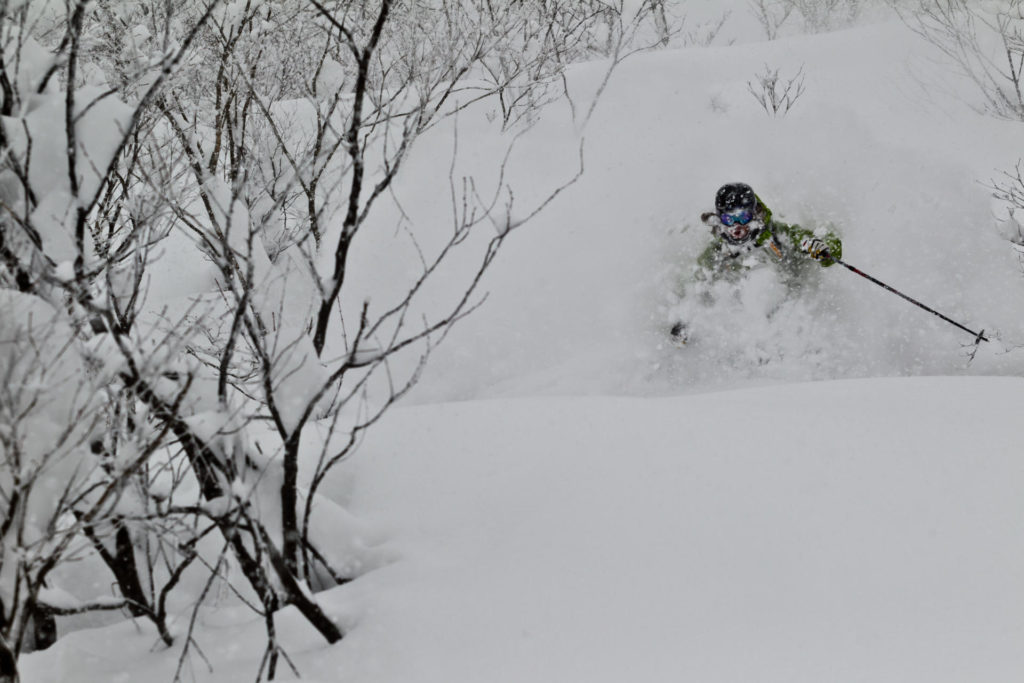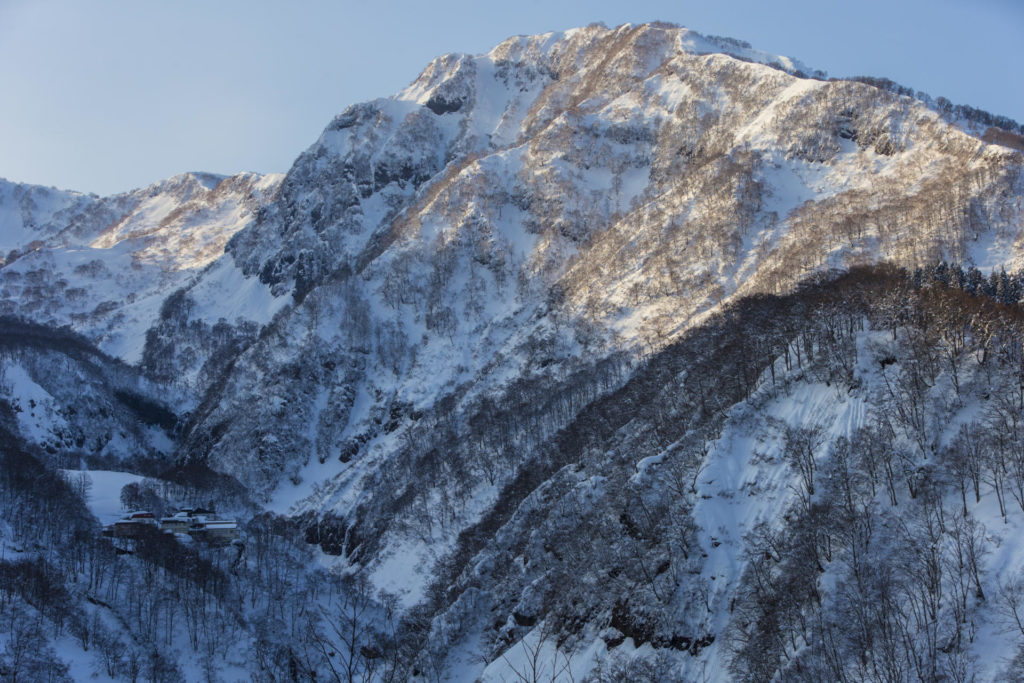“We’re just skiers,” insists Ryoji Sasaki.
Make that Expert Instructor, Sergeant Major Ryoji Sasaki of the Jieitai, Japan’s Self-Defense Force. Every member of the country’s entirely defensive (for the time being, at least; the possible goals of Mr. Abe and the general pronouncements of Mr. Trump notwithstanding) armed forces must try their hands at sliding on snow.
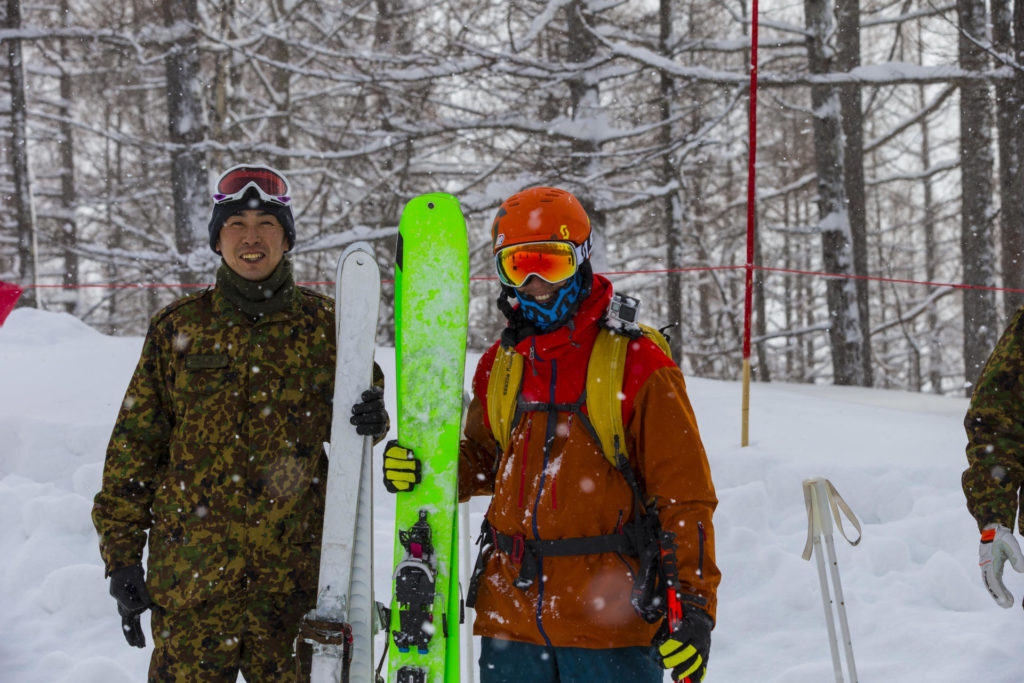
This being a mountainous nation where snow falls over almost every island, skiing is seen as an important part of the defensive soldier’s skills, but that does not mean they’re your average skiers out for fun on the hill.
“Everyone has to at least pass san-kyu (level three) of the Ski Association of Japan (SAJ) training,” Sasaki explains. “The only difference is that they have to do it in our gear, which is not easy.”
Skis, he says, are seen as the best way to move swiftly through the snowy and hilly nation, so they can’t be too fat, and have to work with what you’ve already got, meaning standard-issue, polish them-up army boots.

Mount Myoko at sunrise 
The current Jieitai ski comes in one length: 170 cm. Its tips and tails are 100 mm., the waist 95 mm. (Most modern skis, by comparison, either have a more hourglass shape for hard snow or are much wider for powder). It basically looks unchanged from the long-used first generation, which was wood, completely straight and likewise came in one length.
For years, many people told me that they were wood, so they could be used for firewood, and were equipped with leather bindings that could be boiled and eaten—although Sasaki laughs at this.
“The second generation was still straight, but in fiberglass,” he says. “The biggest thing with the third generation, introduced only four years ago, was the sidecut. You can hardly see it, but it does make it a lot easier to get people skiing.”
The skis also have scalloped bases, because the troops not only study downhill techniques, but also must go cross country and climb on them.
“They can’t have too much shape,” Sasaki says. “They’re great for walking, but not that good for skiing, to be honest, and not many people today could use them. That means we have to practice a lot,” he laughs. “That’s why we go to ski areas all over the country, where it’s a lot easier to teach and learn.”
This technical information helps explain what you’re likely to see on weekdays at many ski areas in Japan. The first hint is the drab olive trucks unobtrusively placed at the edge of the parking lot. It’s something we see a lot at the areas around the base of Mt. Myoko, which also is just a quick drive from a major base in Joetsu City, on the Sea of Japan coast.
Then comes the surprise of seeing huge groups of dark-clad troops out on the slopes on those skinny little skis. If they’re new to the snow, there will be a lot of old-fashioned turning with hands high for balance, sliding backwards with heels in the air and face on the snow (people who have tried telemark skiing will identify with this) and general tumbling across the snow.

Duncan Adams in Myoko Japan 
The village of Tsubame as viewed from skiing above Akakura-Kanko ski area
“We basically follow SAJ training, but the early stages are a lot harder than if they were using modern gear,” Sasaki says. “We start with physical stretching, then show them how to put on the bindings (which are a bunch of leather straps and a jam-in toe). We get them used to moving around, then start teaching the wedge position.”
That does not mean everybody is falling all over the hill. Sasaki, a native of Hokkaido and, like lots of Japanese, a skier since he could walk, can hold his own with any hard-booted, shaped-skied slider on the hill.
The style is a little old-fashioned, but then so is the gear, and he can do a drop-knee telemark turn, or noodle his way in an old-fashioned, knees-together style through some pretty big bumps.
The 500 top skiers in the Jieitai who, like Sasaki, have reached the Instructor or Expert Instructor levels, have passed the SAJ’s top exams, so after leaving the military, they can teach skiing anywhere in the country. For the Expert level, they also add on avalanche and winter emergency training, and must also go through the Cold Weather Combat Training School.
“That is really cold and tough,” Sasaki remembers. “All the tests are challenging—40 percent of the people fail.”
Taking a break from the skiing, we head inside to warm up. Sasaki fires up a DVD featuring some of the graduates of the course.
“This is kind of a PR thing, really,” he says with typical understatement, but it’s obvious he is proud of the professional-looking video. In it, the instructors, on those unlikely skis, totally wimpy bindings and floppy boots, fly through highspeed, crisp formation skiing.
Most of the time, at most ski areas where this happens in Japan, you’re not likely to see that level of skiing by the soldiers, unless you happen to be at the area where they do the advanced cold-weather training (think Hokkaido). But it may well happen that, among the groups of beginners, suddenly an identically clad soldier comes down the hill confidently cutting a series of clean arcs through the group.
That is the third observation to be made of these skiers in camo: they are quiet, polite, and they keep to themselves, pretty much like the Jieitai itself.
“After all, we are military skiers, so we don’t want regular people to think about us too much,” Sasaki says—reflecting, too, the unique idea of a defensive army in what still is a pacifist nation. “Like I said, we’re just skiers, too.”





